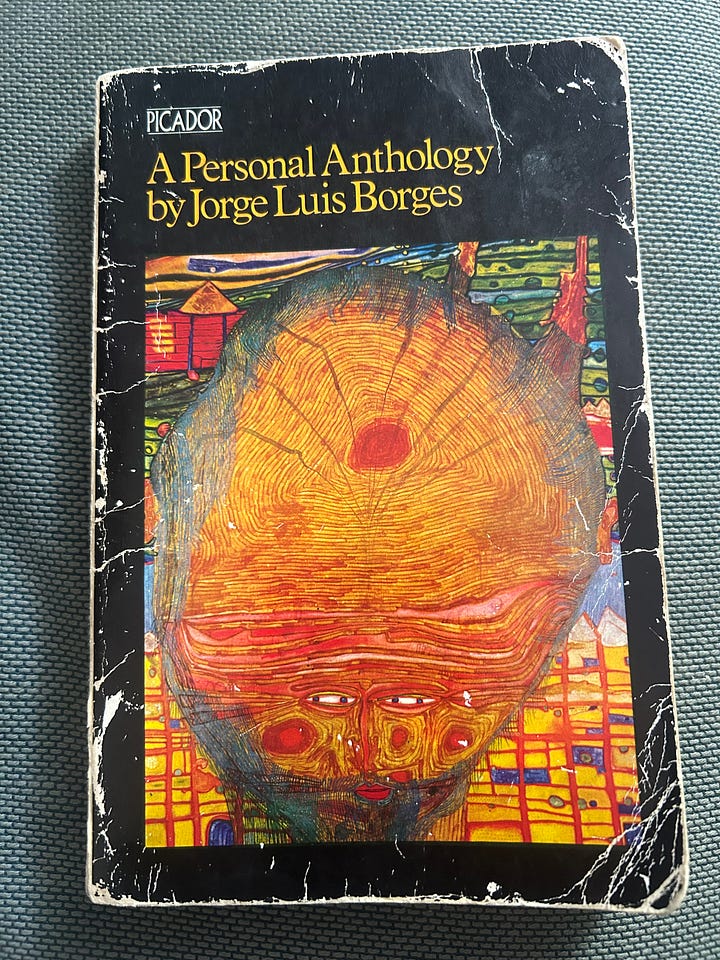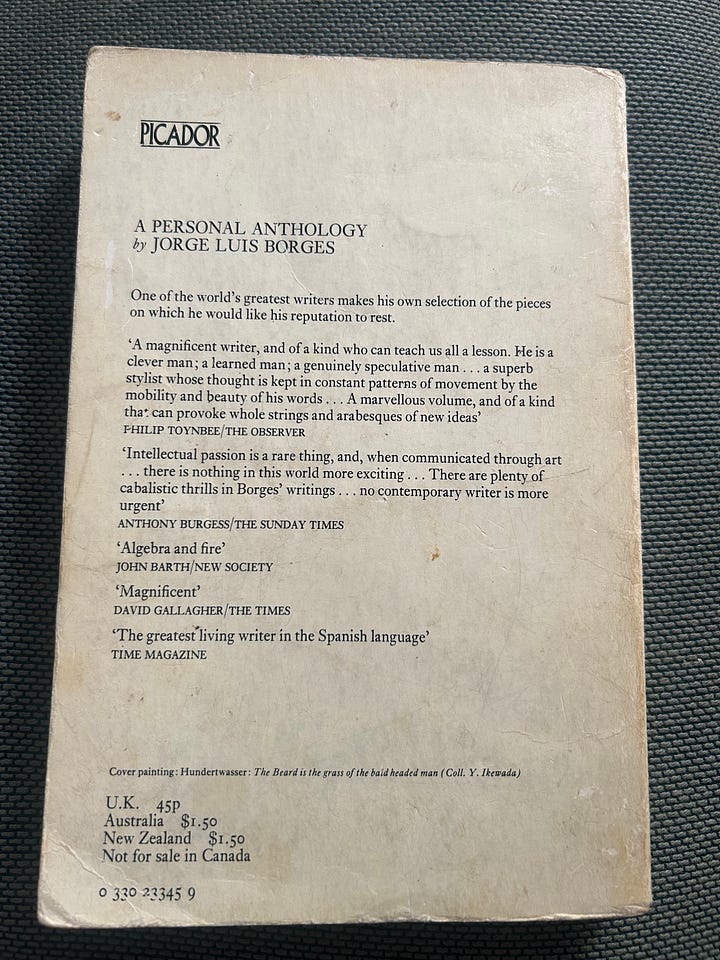A Bengali tiger, shot by Baron Oszkár Vojnich, Sidli, Assam, India, 1911 - Fortepan
My friend Julius Strauss (author of 2 excellent substacks, here and here) drew my attention this week to a recent conversation between Ezra Klein, the New York Times podcaster, and Kyla Scanlon, the 28 year old Gen Z economist. Like all of us, Klein and Scanlon are wading through the mud and rocks of what is actually happening in the world, what it adds up to, and what might happen next. Or to use an analogy from my recent trip through the Peruvian Andes, how do you cross a mudslide on a mule?
Inevitably, Klein and Scanlon soon found themselves discussing Donald Trump.
‘Typically, events create narratives. But during the Trump presidency, narratives create events.’
Think about that for a moment. If history was once the story of what we thought happened, the story or narrative has now overtaken the events which it describes, and is now in the lead. And the ‘truth’ - whatever that is - is left to drag along behind the story which has been spun. In the Brexit debate, Dominic Cummings says ‘Take Back Control’, which turns into a deafening chant, the chorus of the carnival, broadcast from big bass speakers on the lead float, and we all run, or dance, or stumble along behind it, applauding or protesting. Slaves to the beat, to the algorithm. And Trump, as Kyla Scanlon and Ezra Klein suggest, is not just using the algorithm. He embodies the algorithm. He bombs Iran. He says he destroyed Iran’s nuclear arsenal. A leaked intelligence report suggests he didn’t. ‘Lies’ he shouts, then he moves on to the Big Beautiful Bill. The facts do not matter any more. Only the daily circus, the passing show. ‘Which is kind of how Trump moves throughout his presidency. He got bored of the war, essentially,’ - Kyla Scanlon.
The war between Israel and Iran, the war between Israel and the Palestinians, and the war between Russia and Ukraine.
On the morning Julius introduced me to Klein and Scanlon, I read a poem in my battered copy of Jorge Luis Borges ‘A Personal Anthology.’ From my signature on the inside cover, and the price on the back, I reckon I first read this nearly 50 years ago.
I will illustrate the poem with photos produced during a casual search for the word ‘Tigris’ in the archive of the excellent Hungarian Fortepan collection. Many, but not all, are of the magnificent animals shot by the Hungarian aristocrat Baron Oszkár Vojnich on his journeys through India, Burma, Malaya and Java in the early years of the 20th century. Vojnich finally shot himself in his hotel room in Port Said, Egypt, on his 50th birthday in May 1914.


Cover painting by Hundertwasser: ‘The beard is the grass of the bald headed man’ , Picador 1972 edition.
The Other Tiger - J.L.Borges
I think of a tiger. The half-light enhances
the vast and painstaking library
and seems to set the bookshelves at a distance;
strong, innocent, new-made, bloodstained,
it will move through its jungle and its morning,
and leave its track across the muddy
edge of a river, unknown, nameless
(in its world there are no names, nor past, nor future
only the sureness of the passing moment)
Baron Oszkár Vojnich with a tiger he shot, Bali, 1911
and it will cross the wilderness of distance
and sniff out in the woven labyrinth
of smells the smell peculiar to morning
and the scent of deer, delectable.
A German Tiger II tank, named after the ‘Königs-’ or Bengal tiger, Budapest, October 1944
Among the slivers of bamboo, I notice
its stripes, and I have an inkling of the skeleton
under the magnificence of the skin, which quivers.
In vain, the convex oceans and the deserts
spread themselves across the earth between us;
from this one house in a remote lost seaport
in South America, I dream you, follow you,
oh tiger on the fringes of the Ganges.
Hungarian actress Judit Hernádi in the film Hanyatt-Homlok (‘Running Off’) 1984
Afternoon creeps in my spirit and I keep thinking
that the tiger I am conjuring in my poem
is a tiger made of symbols and of shadows,
a sequence of prosodic measures,
scraps remembered from encyclopedias,
and not the deadly tiger, the luckless jewel
which in the sun or the deceptive moonlight
follow its paths, in Bengal or Sumatra,
of love, of indolence, of dying.
Baron Oszkár Vojnich after shooting a tiger and tiger cub, Bijni, Assam, India, 1911
Against the symbolic tiger, I have planted
the real one, whose blood runs hot,
and today, 1959, the third of August,
a slow shadow spreads across the prairie,
but still, the act of naming it, of guessing
what is its nature and its circumstances
creates a fiction, not a living creature,
not one of those who wander on the earth.
Boy reading on the 3rd floor of Nador utca 5, Budapest, site of the former ‘Tigris’ or Tiger Hotel. Albin Schmidt 1909, Fortepan.
Let us look for a third tiger. This one
will be a form in my dream like all the others,
a system and arrangement of human language,
and not the tiger of the vertebrae
which, out of reach of all mythology
paces the earth. I know all this, but something
drives me to this ancient and vague adventure,
unreasonable, and still I keep on looking
throughout the afternoon for the other tiger,
the other tiger which is not in this poem.
(The Other Tiger, by Jorge Luis Borges, first published 1961 by Editorial Sur, Buenos Aires. This translation by Alastair Reid, Grove Press Inc. 1967)
What I would like to say with this post: There is a virtual reality, and a physical reality. The virtual reality is increasingly comfortable, ‘frictionless’, even ‘meaningless’ - the place we flee to escape what Kyla Scanlon calls the ‘friction’ of the real world. Borges summons an imaginary tiger over which he appears to have control, but remains obsessed by the real tiger, lurking in the wilderness, somewhere behind him as he writes, in his library, ready to pounce. But only in the real world might we, like the real tiger, roam free.
Tiger in Bandavgarh National Park, photo by Santanu Bahali - https://commons.wikimedia.org/w/index.php?curid=49281045
My latest book, Walking Europe’s Last Wilderness, was published by Yale University Press in February this year.












THX